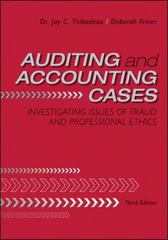The Baptist Foundation of Arizona (BFA) was an Arizona religious nonprofit 501(c)(3) organization that was incorporated in
Question:
The Baptist Foundation of Arizona (BFA) was an Arizona religious nonprofit 501(c)(3) organization that was incorporated in 1948 to provide financial support for Southern Baptist causes. It was formed under the direction of the Arizona Southern Baptist Convention, which required BFA to be a profitable, self-sustaining independent entity (that is, it could not accept money from any other source). In BFA’s early days, it focused its attention on funding church start-ups and providing aid for children and elderly people. In 1962 Pastor Glen Crotts became its first president and was succeeded in 1984 by his son, William P. Crotts. Under William Crotts’s leadership, BFA began to invest heavily in the Arizona real estate market, and also accelerated its efforts to sell investments to church members. Although Arizona real estate prices skyrocketed in the early 1980s, the upward trend did not continue, and property values declined substantially in 1989. Soon after this decline, management decided to establish a number of related affiliates. These affiliates were controlled by individuals with close ties to BFA, such as former board members. In addition, BFA gained approval to operate a trust department that would serve as a nonbank passive trustee for individual retirement accounts (IRAs). To do so, BFA had to meet certain regulatory requirements, which included minimum net worth guidelines.
Related Parties Two of BFA’s most significant affiliates were ALO and New Church Ventures. A former BFA director incorporated both of these nonprofit entities. The entities had no employees of their own, and both organizations paid BFA substantial management fees to provide accounting, marketing, and administrative services.
As a result, both ALO and New Church Ventures owed BFA significant amounts by the end of 1995. Overall BFA, New Church Ventures, and ALO had a combined negative net worth of \($83.2\) million at year-end 1995, \($102.3\) million at year-end 1996, and \($124.0\) million at year-end 1997.2 New Church Ventures Although the stated purpose of New Church Ventures was to finance new Southern Baptist churches in Arizona, its major investment activities were similar to those of BFA. That is, New Church Ventures raised most of its funds through the sale of investment agreements and mortgage-backed securities, and then invested most of those funds in real estate loans to ALO. Thus the majority of New Church Ventures’ assets were receivables from ALO. New Church Ventures’ two main sources of funding were BFA’s marketing of its investment products to IRA investors and loans it received from BFA.3 ALO Contrary to its intended purpose to invest and develop real estate, one of ALO’s primary activities in the 1990s was to buy and hold BFA’s nonproducing and overvalued investments in real estate so that BFA could avoid recording.........
Case Questions
1. Based on your understanding of inherent risk assessment, identify three specific factors about BFA that might cause you to elevate inherent risk. Briefly provide your rationale for each factor that you identify.
2. Comment on why the existence of related parties (such as ALO and New Church Ventures) presents additional risks to an auditor. Do you believe that related party transactions deserve special attention from auditors? Why or why not?
3. Assume you are an investor in BFA. As an investor, what type of information would you be interested in reviewing before making an investment in BFA? Do you believe that BFA should have been exempt from Arizona banking laws? Why or why not?
4. Consider the planning phase for the audit of BFA’s trust department operations. As an auditor, what type of evidence would you want to collect and examine to determine whether BFA was meeting the U.S. Treasury regulations for nonbank passive trustees of IRA accounts?
Step by Step Answer:

Auditing And Accounting Cases Investigating Issues Of Fraud And Professional Ethics
ISBN: 9780078110818
3rd Edition
Authors: Jay Thibodeau, Deborah Freier





